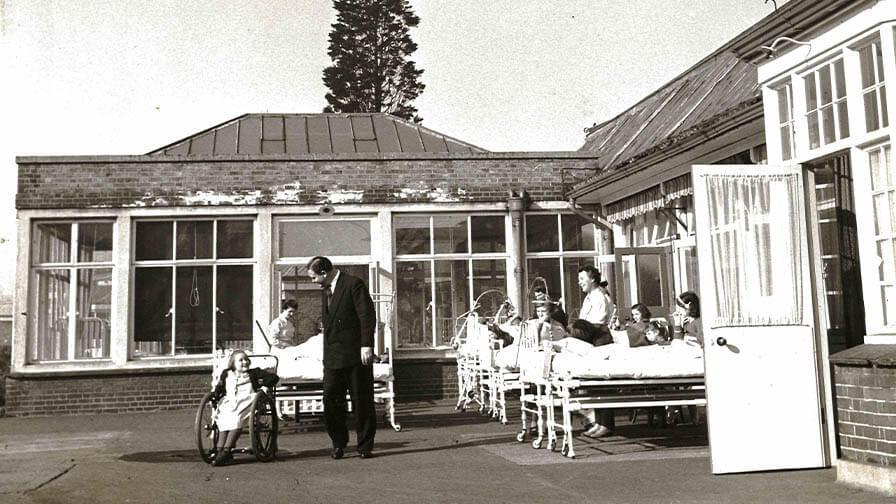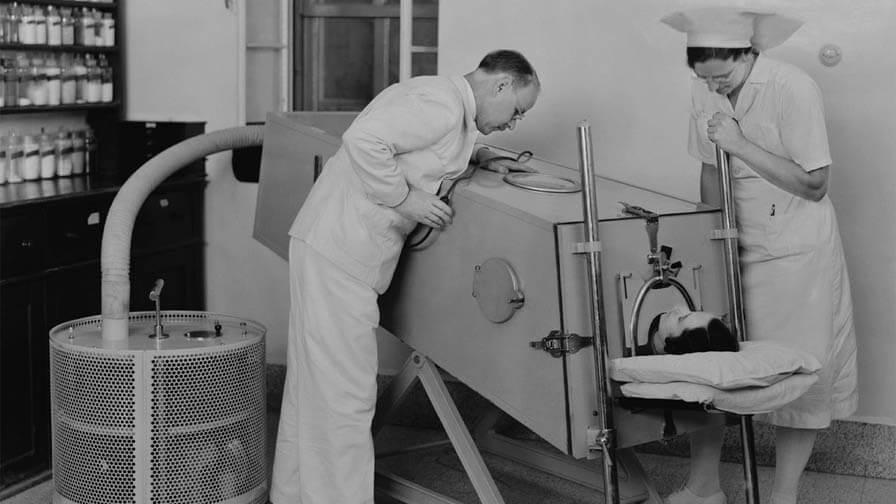breadcrumb navigation:
- Home /
- About us /
- Our History /
-
current page
The History of Polio
World Polio Day: The History of Polio
Published on
Updated:
World Polio Day:
The History of Polio
But as long as a single child remains infected, children in all countries are at risk of contracting polio. Failure to eradicate polio from these last remaining strongholds could result in a global resurgence of the disease*.
We're supporting World Polio Day to help share this important message – and to honour the role that our charity's founder, Duncan Guthrie, played in introducing the first UK polio vaccines.

Polio is caused by the poliovirus, a highly contagious virus specific to humans. It enters the body through the nose or mouth and develops in the throat and intestines. The polio virus may go on to invade the central nervous system, destroying or damaging the nerve cells that control muscles, resulting in varying degrees of weakness, then paralysis.
Polio mainly affects children aged under five years of age. One in 200 infections leads to irreversible paralysis and, among those paralysed, five to 10 per cent die when their breathing muscles become immobilized. There is no cure for polio once a person becomes infected; it can only be prevented by immunisation.
In the 1950s a device known as an 'iron lung' (pictured below) was used to help polio patients whose breathing muscles had become affected. The machine worked by creating a space in the lungs that was automatically filled by air flowing in through the mouth and nose. Once the patient was enclosed in the machine, a perfect seal was created. When the air was pumped out of the casing, the reduction in pressure made the chest rise, filling the lungs. When the air was allowed back in, the lungs emptied.

Action Medical Research and the polio vaccine
Action was founded by Duncan Guthrie, whose own daughter Janet contracted polio aged just 20 months. Our charity played a crucial role in the development of the first UK polio vaccines and has since helped enable many medical advances to help save and change the lives of children today.
Early funding from Action (then known as the National Fund for Poliomyelitis Research) went to Professor George Dick and his team at Queen’s University in Belfast, to test and develop two polio vaccines for use in the UK: the injectable Salk vaccine, introduced in 1955, and the oral sugar cube Sabin vaccine, which was introduced in 1962. These researchers focused on establishing the safety and effectiveness of the vaccines, as well as the right amount to give and the best ways to administer them. They also explored how polio infects humans and how well the vaccines could protect whole populations.

An epidemic in the 1950s in the UK and beyond
Did you know that Great British Bake Off's Mary Berry contracted polio at the age of 13 and had to spend three months in hospital? This resulted in her having a twisted spine, a weaker left hand and thinner left arm. She has said that the period of forced separation from her family while in hospital 'toughened [her] up' and taught her to make the most of every opportunity she would have.
The father of Stephanie Flanders, former BBC economics editor, was paralysed by the infection when he was 21. Michael Flanders was one half of the world-famous singing duo of that era, Flanders and Swann. He survived as a young man, but his paralysis due to polio meant he was forced to use a wheelchair. He died, aged just 53, through complications caused by the disease. Other well-known names affected outside of the UK as children include Mia Farrow, Donald Sutherland and Joni Mitchell.

World Polio Day: there's still more work to do
The polio epidemic in the 1950s in the UK, and the development of subsequent vaccines which helped protect many thousands, clearly demonstrate the importance of medical research. Commemorating the birthday of Dr Jonas Salk, who led the first team to develop a vaccine against poliomyelitis, World Polio Day is on 24 October. It's a day when we remember the amazing efforts of our founder whose determination to discover a vaccine for polio inspires us today, as we continue to work to save and change the lives of vulnerable babies, children and young people through vital medical research.
Since the polio epidemic, Action have developed an extraordinary track record in supporting some of the most significant medical breakthroughs in recent history – breakthroughs that have helped save thousands of children’s lives and changed many more such as ultrasound scanning in pregnancy, discovering the importance of taking folic acid and testing the rubella vaccine.
World Polio Day is also a day we add our voice and share the message that there is more work to be done to eradicate this dreadful disease and keep every child, in every country, safe from the threat of polio.
Find out more
Find out more about our heritage as a charity.
We're so grateful for support and, whatever the future holds, we’re dedicated to saving and changing the lives of children – inspired today and every day by one incredible dad back in 1952.
Take a look at our 'polio in pictures' blog.
Will you help make a difference for other sick babies and children?
You can support Action by leaving a gift in your will.
* World Health Organisation online: https://www.who.int/en/news-room/fact-sheets/detail/poliomyelitis/ [accessed 7 October 2025].
Fighting Rare Diseases
Since those early days we've continued to invest millions in top quality research into child health, including supporting the introduction of the Rubella vaccine and the Hib vaccine to protect against bacterial meningitis.
30% of children with a rare disease will lose their lives before their fifth birthday, which is why we continue to follow in the footsteps of our founder, whose determination knew no bounds, as we fight to find the answers and strive to develop treatments and cures to help save children’s lives. But we can’t do it alone.

